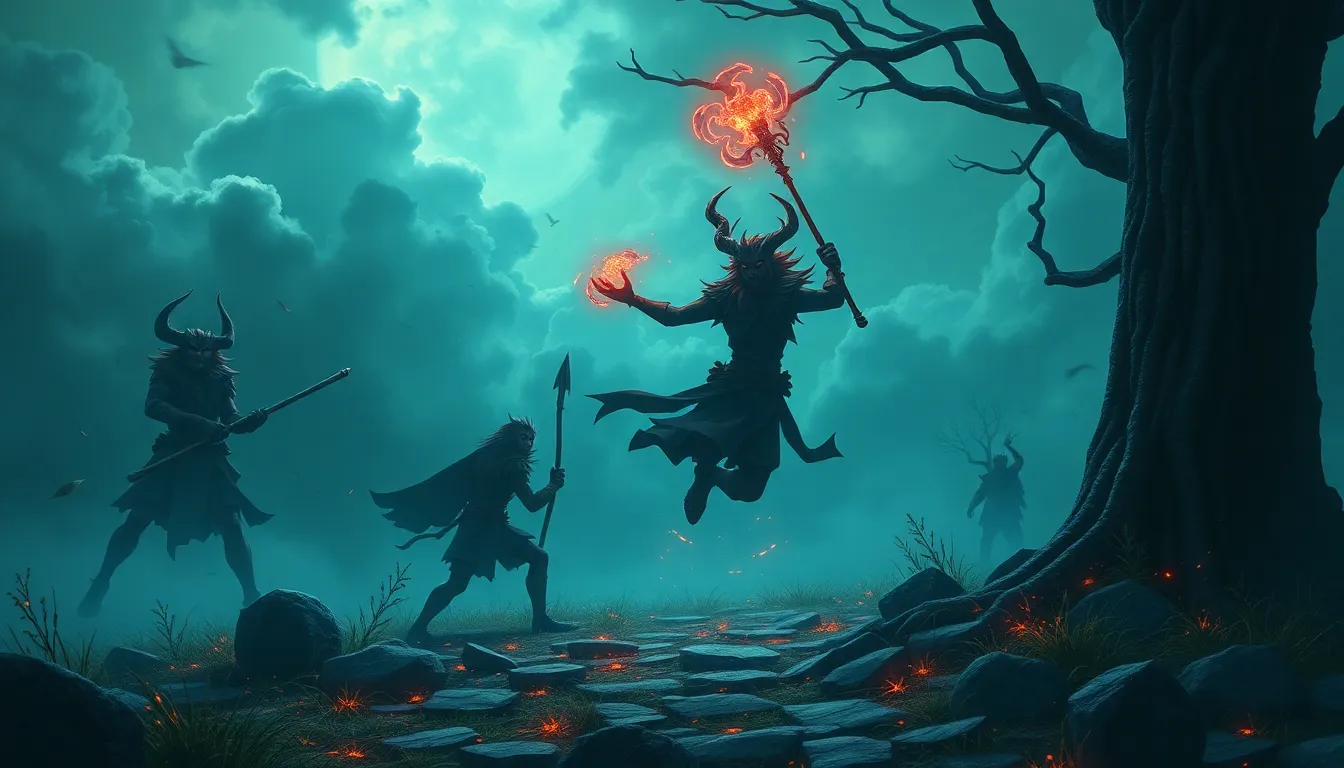Trickster Tales: The Fine Line Between Hero and Villain
Introduction to Trickster Archetypes
Trickster figures have long held a prominent place in mythology and folklore across various cultures. These characters are characterized by their cunning, intelligence, and often playful nature. They operate in the ambiguous realm between hero and villain, making them fascinating subjects of study.
The cultural significance of tricksters is profound, as they often embody the complexities of human nature. They challenge norms, question authority, and reveal the flaws within societal structures. From ancient times to modern interpretations, tricksters continue to captivate audiences with their dual roles.
Historical Context of Trickster Tales
The origins of trickster tales can be traced back to ancient cultures. Many indigenous societies, such as the Native Americans and African tribes, incorporated trickster figures into their oral traditions. These stories served various purposes, from entertainment to moral instruction.
Over time, the trickster archetype has evolved, adapting to the values and beliefs of different societies. While the core characteristics remain consistent, the nuances of each culture shape the way these characters are portrayed and understood.
Common Characteristics of Tricksters
Trickster characters share a range of traits that define their nature:
- Cunning: Tricksters are often clever and resourceful, using their wit to navigate challenges.
- Intelligence: They possess a sharp intellect, allowing them to outsmart others.
- Playfulness: Tricksters enjoy games and mischief, often using humor to convey deeper truths.
This duality of tricksters as both heroes and villains adds depth to their narratives. They can be seen as champions of the oppressed or as instigators of chaos, illustrating the complexities of morality.
Cultural Variations of Trickster Tales
Trickster tales manifest differently across cultures, with each tradition offering unique interpretations:
- Anansi: In African folklore, Anansi the spider is a clever figure who often outsmarts larger animals, symbolizing the triumph of the underdog.
- Loki: In Norse mythology, Loki is a shape-shifter who embodies chaos and mischief, straddling the line between friend and foe.
- Coyote: In Native American stories, Coyote is both a creator and a trickster, representing the duality of existence.
These cultural contexts shape the interpretation of trickster characters, revealing how different societies view the balance of chaos and order.
Trickster Tales as Social Commentary
Trickster stories often serve as a mirror to societal values and norms. They reflect the struggles and aspirations of the cultures from which they originate. By challenging authority and questioning morality, tricksters provoke thought and encourage critical examination of societal structures.
Through their antics, tricksters highlight the absurdities of life and the inconsistencies of human behavior. They become vessels for social commentary, addressing issues such as inequality, injustice, and the nature of power.
The Psychological Appeal of Trickster Figures
The allure of tricksters in literature and media can be attributed to their complex personalities. Audiences are drawn to characters who defy categorization, as they embody both light and dark qualities. The psychological appeal lies in their unpredictability and the moral ambiguities they present.
Tricksters resonate with our own struggles with identity and morality, allowing us to explore our darker impulses in a safe narrative space. They challenge us to reconsider our definitions of right and wrong.
The Fine Line: Heroism vs. Villainy
Many tricksters blur the line between hero and villain, creating moral ambiguity that enriches their stories. For instance:
- Deadpool: This anti-hero embodies trickster qualities with his irreverent humor and disregard for conventions, often acting for personal gain while still engaging in heroic feats.
- Jack Sparrow: The infamous pirate plays by his own rules, often helping others but always with self-interest in mind, showcasing the complexity of his character.
These characters present ethical dilemmas that challenge our understanding of morality, prompting discussions about the nature of good and evil.
Modern Interpretations of Trickster Tales
In contemporary literature and film, trickster archetypes continue to thrive. Characters like Deadpool and Jack Sparrow have become icons, embodying the qualities of the classic trickster while appealing to modern audiences.
These modern interpretations reflect current societal issues and the ongoing fascination with characters who challenge traditional narratives. They remind us that the line between hero and villain is often blurred.
Lessons Learned from Trickster Tales
Trickster narratives are rich with moral lessons that encourage critical thinking. They often teach that:
- Authority should be questioned.
- Rules can be bent or broken for greater purposes.
- Humor can reveal profound truths about human nature.
Through their escapades, tricksters invite us to reflect on our own beliefs and the structures that govern our lives.
Conclusion: The Enduring Legacy of Trickster Tales
Trickster tales remain relevant in today’s world, captivating audiences with their exploration of the complexities of human nature. The continued fascination with characters who defy simple categorizations as purely good or evil speaks to our desire for nuanced understanding.
As we navigate a world filled with moral ambiguity, the lessons of trickster tales remind us of the importance of questioning norms and embracing the complexities of life.


